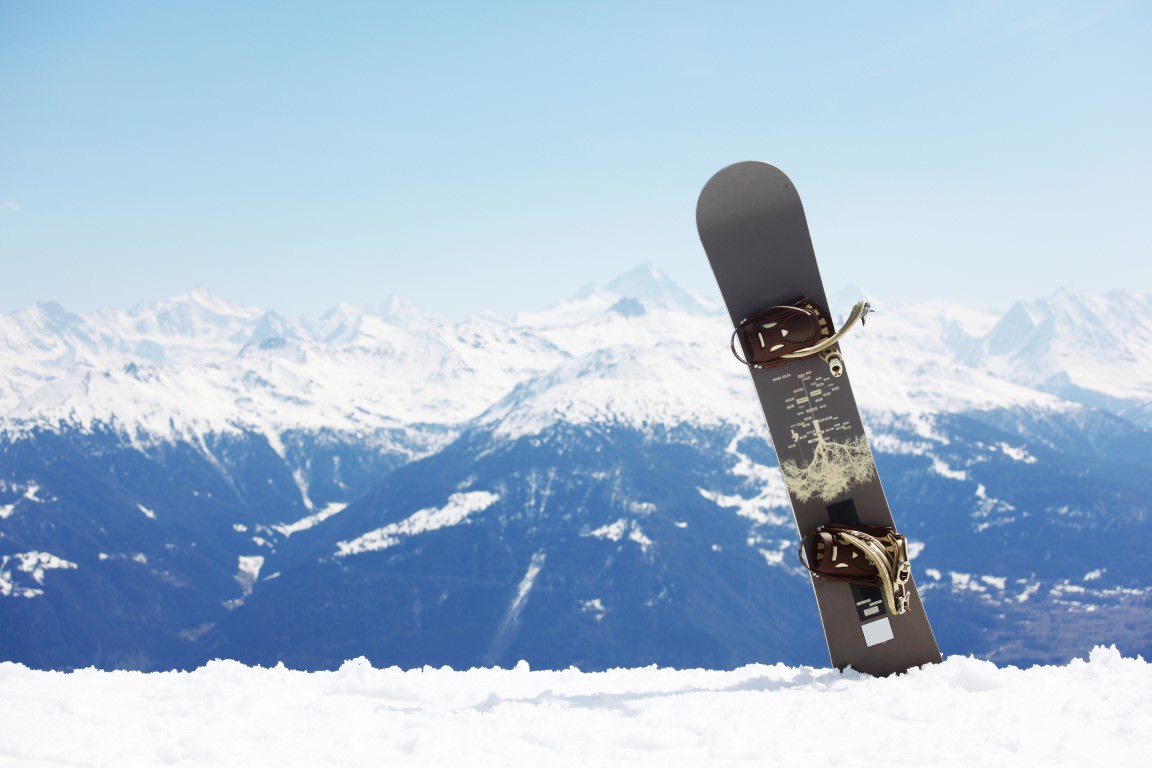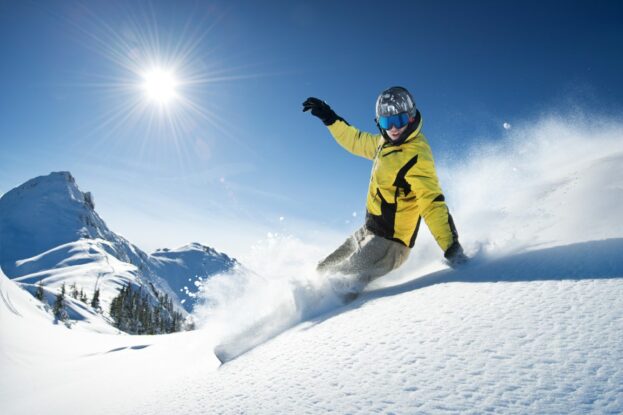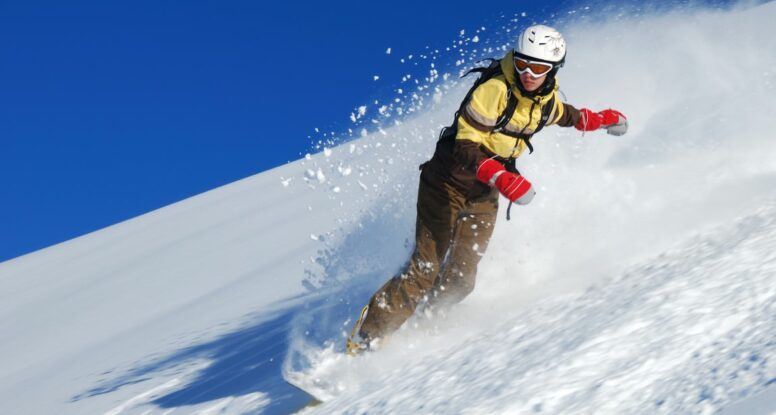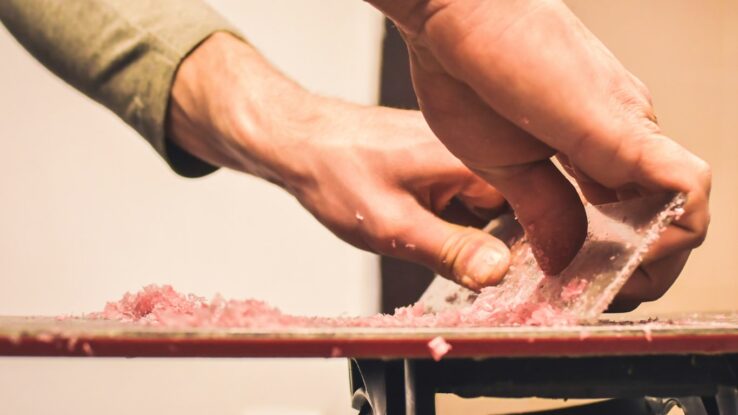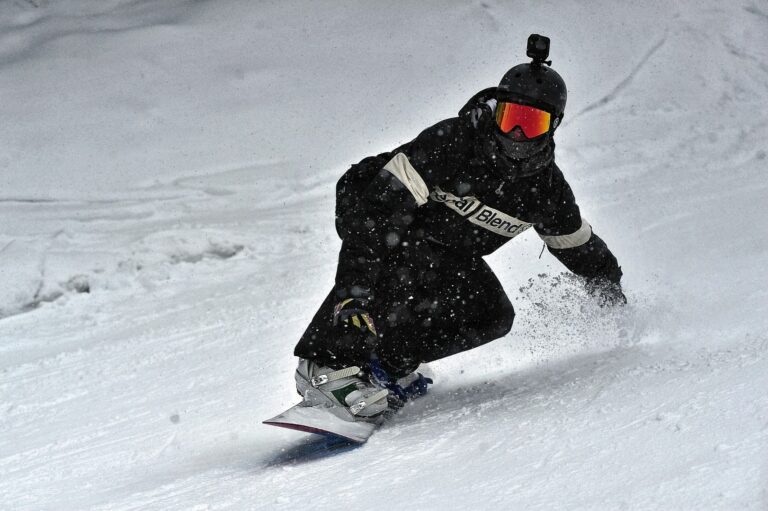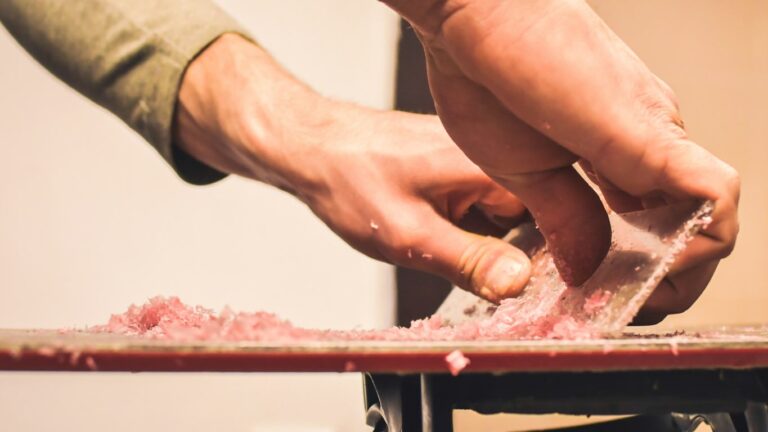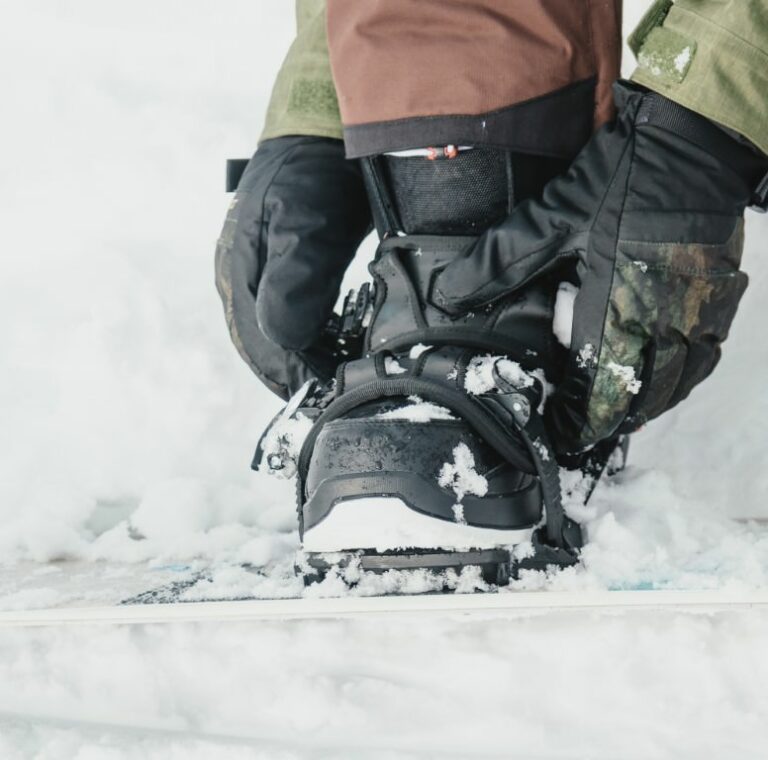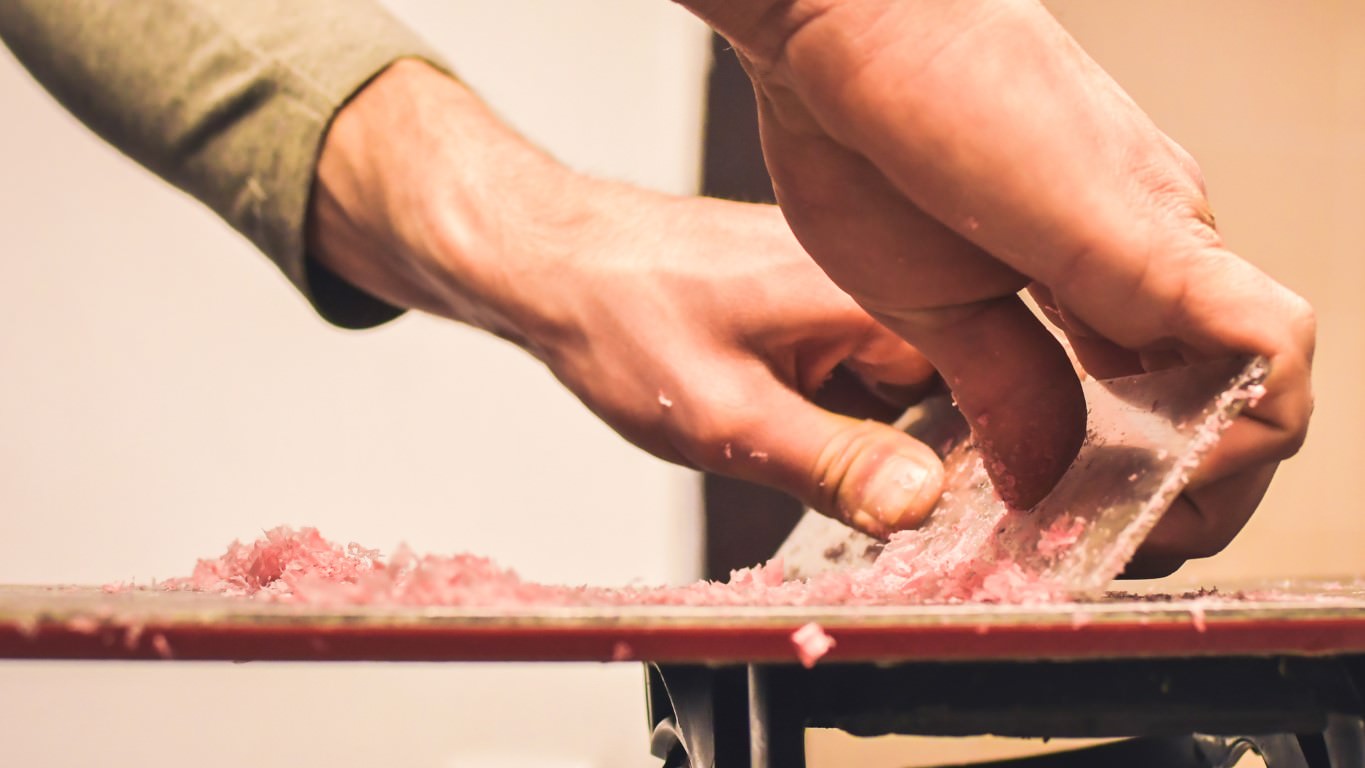How Long Should a Snowboard Last on Average?
How long should a snowboard last? This question can be tricky to answer because it’s so dependent on brand quality, riding style, maintenance and storage. In general, expect a snowboard to last 100-200 days on snow.
In my personal experience, I’ve had snowboards surpass this, and some fall apart after 20 riding days, so results can vary significantly. All of this was seen with similar care and conditions, too, so sometimes luck can play a role. Luckily, some brands like Salomon, Burton and Rome stand behind their products and have extremely good warranty programs for two years or more.
No matter how well you take care of your snowboard, there will be changes in performance as it ages. The biggest thing that can change is the flex or pop of the board. The more a snowboard is ridden, the more it loses its flex rating, pop and camber profile. Although you can continue to ride a board when this happens, you may see a decrease in its pop, snappy feel or carving ability.
What Can Cause Snowboards to Degrade Faster?
There are quite a few variables that can lengthen or shorten the lifespan of a snowboard. Some variables hold significant weight, while others aren’t as important.
Inadequate Maintenance and Care
This is one of the most important steps in prolonging the life of your snowboard. How do you handle your snowboard? Do you place it lightly on the ground and on ski racks? Or do you throw it around with little care? If you’re rough with the handling of your snowboard, you will notice scratches and chips begin to form around the edges.
Infrequent waxing and edge sharpening
These two steps are not just for optimal performance. Waxing and tuning your edges regularly keeps your board in great shape and prevents premature deterioration.
Waxing Regularly
Waxing your snowboard regularly is not just important for performance, it also protects it from drying out and limits smaller scratches. Waxing fills and seals the micropores in the base of the board and prevents water and dirt from seeping into the wooden core of the snowboard.
When the base becomes dry, it microscopically shrinks and applies additional tensile stress on the epoxy holding the board together. A severely dry board can easily delaminate when riding, leaving you with a costly repair or worse, looking for a new snowboard.
Tuning Edges
This step isn’t required as much as waxing your board. Sharpening your edges once or twice a season keeps them sharp, aligned with the board and removes any rust or burrs (uneven sections). Keeping your edges tuned will ensure they uniformly wear and will keep your board control consistent and predictable.
Improper Storage Conditions
Proper snowboard storage is another extremely important step in prolonging its life. Aim to store the snowboard in a cool area with minimal sun exposure. UV light from the sun can break down the plastics and epoxies of the snowboard.
Given the materials used when making a snowboard, exposure to prolonged heat, like a car or shed in the summer can warp the snowboard or make it lose its camber. Leaving your snowboard in a moist cold environment like your car can also encourage moisture to make its way into the snowboard. The freezing and cooling can lead to delamination. Additionally, moisture can lead to rust forming on your edges.
The best way to store your snowboard is to store it inside, against a wall, under a bed and in an area that’s temperature controlled with normal humidity. If you’re storing your snowboard for the summer, make sure you put a layer of wax on it to prevent it from drying out during the summer months.
You also want to make sure, however you store your board to ensure there is nothing resting on it to put pressure on its profile. Placing weight on top of the snowboard will flatten it out and the board will lose its pop and performance.
Riding Frequently on Rocky or Abrasive Terrain
Here’s one variable that will drastically shorten the lifespan of a snowboard. Constantly riding on dirty, rocky or abrasive terrain will damage, break down and lead to the board eventually falling apart. Deep scratches can quickly expose the wooden core of the snowboard to moisture that will eventually destroy the board if not properly fixed.
Riding a lot of terrain park features, especially rails and boxes can scratch the base or worse, cause cracks in your steel edge. Landing hard on these features weakens the steel edge and can lead to dents, deformities and cracks. Your edge can even separate from the board again exposing the core to moisture.
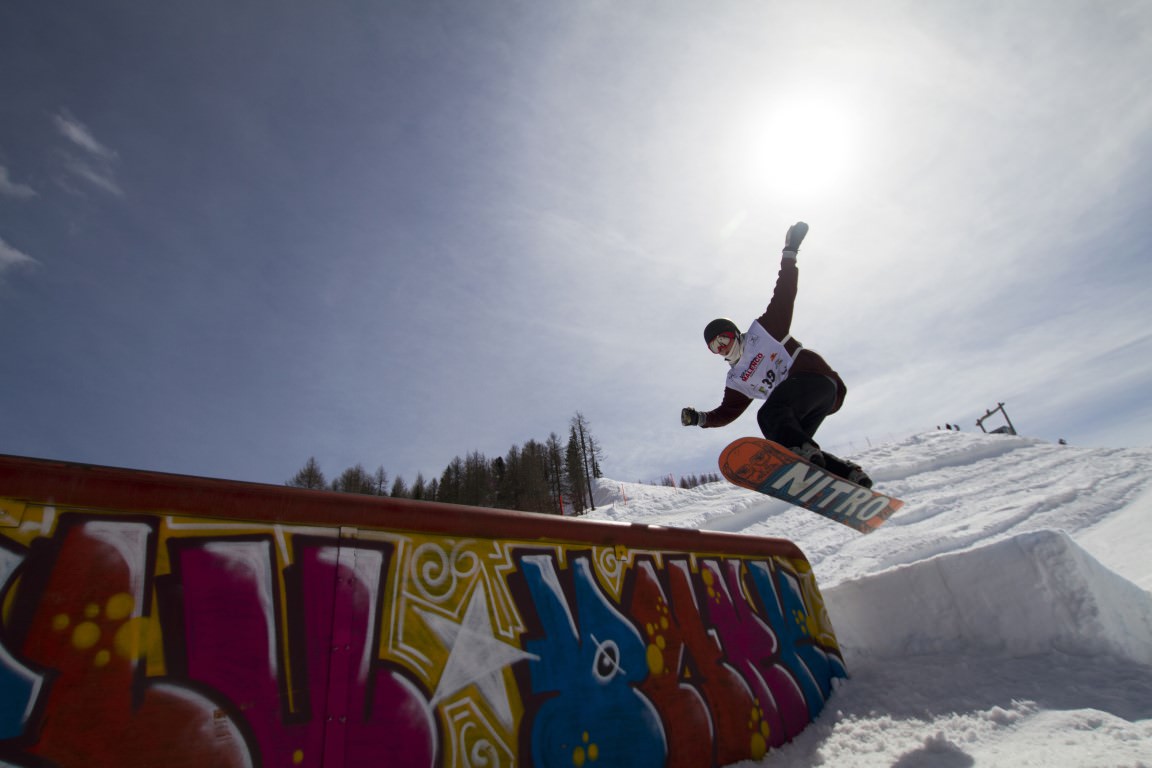
Hard Impacts or Crashes
Large impacts on your snowboard can either slowly degrade the snowboard or completely destroy it in a split second. Repeated slaps can introduce small hairline spider-like cracks in the epoxy that can grow with time and lead to delamination.
If you land heavily on your nose or tail, you can snap or crack the board easily. Once that happens, it’s time for a new snowboard. Crashes into snow usually won’t affect your snowboard much. However, slamming into objects and others can badly damage your board.
Over-tightening or Improper Installation of Bindings
This is one way to mess up your snowboard real quick. If you overtighten, strip the binding holes or pull the inset out of the snowboard, it’s a costly mistake. Installing your bindings should not require a great amount of force when tightening them. If the screws aren’t smoothly screwing into the snowboard, try another screw or look at the insets.
Using the Wrong Wax or Cleaning Products
When you clean your base and wax your board you need to use specific ski/snowboard waxes and cleaners. Regular household cleaners can actually clog the pores of your board and prevent wax from filling the holes. Additionally, regular old candle wax won’t give you the glide or protection ski wax will give you. Candle wax is said to strip off so fast, it won’t even last a single run.
Ignoring Minor Damage or Wear
Noticing changes to your snowboard is also an important step in prolonging the lifespan of your board. If you notice cracks, deep scratches, or small areas of delamination, it’s best to address it before it gets worse. Most of these minor issues can be fixed with minimal time and cost.
The worst thing that can happen is a small issue causes water to seep into the base before you notice it. Once the wooden core gets waterlogged, it swells, rots and delaminates. At this point, the board is as good as gone unless it’s covered under warranty.
Common Signs That Your Snowboard Needs Replacing
Unless you see damage or an extreme decrease in performance, it can be hard to determine if and when you need to replace your snowboard. Usually, it depends on how old or how many seasons the snowboard has been ridden, the level of deterioration and the stiffness of it. Here are a few things to take into consideration
- Is the snowboard flat on the ground?
- Is there any damage you can see?
- Are there any warps or bulges?
- How much will it cost to repair?
- Can the snowboard hold wax and can the edge stay sharp after an edge tune?
- Are your bindings coming loose regularly?
- Is it more than 5 years old?
- Have you had more than 200 days of riding on it?
Sometimes, a major tune up on a board can fix some issues and bring it back to life. A base grind removes a small amount of base material, exposing the pores again and shaving a slight amount of the edges bottom to aid in edges staying sharp for longer. However, once the snowboard loses its stiffness and camber profile, it’s performance is gone and it’s best to replace it. Still unsure? Go demo a new snowboard and see how it feels. You might be surprised how much snowboard technology can change in five years.
How to Increase a Snowboards Lifespan
Since we’ve gone over what not to do with your snowboard, doing the opposite will help prolong the life of your snowboard. These steps are:
- Regular waxing and edge tuning – this keeps your snowboard moisturized, responsive and fast.
- Proper binding installation and maintenance – checking to see screws are at the correct tightness.
- Correct storage during off-season – this includes storage wax and a cool, dark indoor storage space.
- Avoiding excessive exposure to extreme temperatures – prevents premature delamination and warping.
- Using a snowboard bag during transport – protects your snowboard while on a bus or airplane where damage and board compression can easily occur.
- Inspecting for damage after each ride – find common issues quickly and fix them before they get worse.
- Prompt repair of minor damage or scratches – Don’t let minor issues grow and become a big problem
- Avoid excessive exposure to ultraviolet light for general storage – Ultraviolet light degrades the materials of the snowboard quicker and could cause the board to warp, dry out or split.
Do Different Snowboard Types Have Varying Lifespans?
With snowboarding having several different disciplines, snowboard companies have adapted and developed snowboards specific to each riding style. Some of these boards will outlast others, while some can be destroyed quickly in the wrong conditions.
Freestyle and park snowboards are tough and weigh a bit more than a standard snowboard. They use stronger materials and thicker edges. These snowboards are meant to take a beating. Freeride snowboards are usually lighter and stiffer than a freestyle board. Using lighter materials and less reinforcement means it will not age well if it lives in the terrain park.
Beginner snowboards are made budget friendly, so construction isn’t as tough as the above two. In general, a beginner snowboard ridden by an advanced rider will lose its stiffness quickly because of the rider’s ability to overpower the snowboard.

How Do Different Riding Styles Affect a Snowboard’s Lifespan?
Your riding style will impact the life of your snowboard greatly. If you are a beginner who’s riding the board easily and staying on piste, this snowboard will last longer. Someone that rides fast and aggressively puts more force through the board, which will cause the snowboard to lose its stiffness a bit faster than a beginner.
Park riders are notorious for going through boards rapidly due to damage caused by riding in the terrain park. Constant forceful contact with rails, boxes and unbalanced landings will wear the board out much faster than a normal rider. Edge cracks, nose and tail cracks and dents are all very common.
Can Repairing a Damaged Snowboard Extend Its Life?
The snowboard industry is at the point where it can do some very intense repairs and bring a board back from the dead after some serious damage. So yes, repairs can extend the life of a snowboard with respect to the damage, but it won’t extend it past what it would have been prior to damage.
Do More Expensive Snowboards Have a Longer Lifespan?
It’s safe to say that in the snowboarding world, you get what you pay for. More expensive boards are made with higher quality materials. They can also be completely handbuilt and carry a higher attention to detail and quality control. That’s not to say you have to pay top dollar for these higher-quality boards, however, as they can also be picked up secondhand at a great price – if you’re lucky.
Conclusion
It’s important to state that no matter how you ride, maintain and store your snowboard, it will eventually need to be replaced. Do not limit your progression or fun because you want to make your snowboard last a decade.
If you feel like charging down double black runs and sliding every rail in the park, go do it! Just make sure you have the best snowboard available for your riding style. Use the above guide to help maintain your board and prolong its life so it can perform excellently for a hundred plus days on snow.
